#house of potocki
Text

Hôtel Potocki, 75008 Paris
#art#design#architecture#history#luxury lifestyle#style#luxury house#luxury home#stairs#grand staircase#mansion#townhouse#paris#hotel potocki#19th century#poland
702 notes
·
View notes
Text
1250 followers gift - take a peek at my medievalish fantasy game (part 1/?)
I've reached 1250 followers milestone way faster than I expected. Curiously enough, there was influx of new followers after I opened my poll regarding the gift. Has the promise of a showcase of my game lured you in? 😉
The showcase of my game won by the vast majority of votes. Hardly anyone wants me to build a lot. That is probably a right decision. xD
As my medievalish neighbourhood is much older than my modern gameplay, it'll be divided into more parts - there are more Sims, more backstories etc. Translations are going to be inconsistent once again, some names will be probably difficult to translate as some of them are made up to be puns and don't exist in the real world.


I'll start with explaining the rules and lore for this neighbourhood. This is my only neighbourhood that has any rules.
The kingdom is called "Ciemnogród", which can be literally translated into "Dark castle", but has also other meaning: it is used to depict a place or a group of people as superstitious, xenophobic, intolerant and of conservative beliefs. According to the Great Polish Dictionary it's a neologism created by Polish writer Stanisław Kostka Potocki. Wikipedia tells me that the word used in his work has been translated into "Dunceville" and let's stay by this option.
So, backstory for this neighbourhood is that there are two royal houses in the kingdom: Dariuses (red banner) and Claudiuses (blue banner). The houses have fought over the throne, leading the kingdom nearly into a collapse. Economic repercussions of that civil war are felt by every social class: nobility is even scarcer, once prosperous merchants dress not much wealthier than those who used to be middle class merchants. Crime is on the rise.
August the Mad of house Claudius and Konrad the Ginger of house Darius decided to put an end to the madness started by their fathers and agreed to diarchy. Moreover to make the houses more bound, they agreed that their eldest sons would marry their daughters. After the marriage daughters are allowed to keep wearing the colours of the house of their maiden name. Additionally, the third child of each couple, should they have so many children, shall wear the colours of its mother's maiden name house.
The problem is that the kings who signed the pact are dying out and their children can hardly remember the atrocities of the war as it was ended when they were still very young. The royal children, soon to become co-rulers are hungry for power and co-ruling brother-in-law can be an obstacle. Not to mention that the loyalties of their wives are uncertain - will they choose houses of their maiden names or houses of their husbands should a new war start?
Humans and supernatural creatures live in peace, however supernaturals are not allowed to live within city walls. They can own a business and work in the city. The only exception are witches and wizards who can live in the city. Royals respect wizards as they are useful servants and make good advisors. Some people speculate there are more reasons why wizards are treated favourably, especially by the Dariuses - it is said there's a blood curse cast on the house, hence some of its members have red eyes (e.g. Konrad the Ginger and his daughter Fiona). Some say it were the wizards who cast it and Dariuses in fear went lenient on wizards. Other say wizards played a positive role and earnt the privilege by fighting off the curse, red eyes being curse's last remnant.
The kingdom is divided into sections. At the center there is royal district. Between the castle of Claudiuses (on the left) and the castle of Dariuses (on the right) there are gardens of reconciliation, built to commemorate the end of civil war. Opposite the gardens there are public baths.
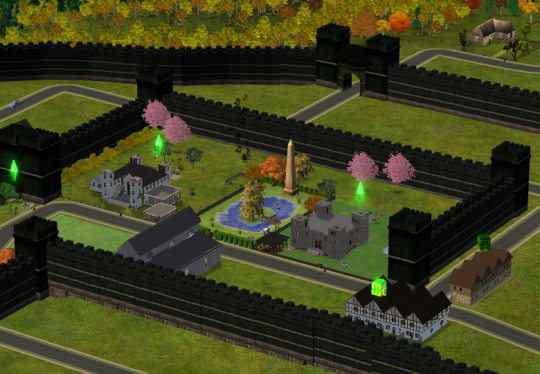
The main part of the city is filled with merchants' houses and their businesses. It is also inhabited by wizards, monks, knights and beggars. There's the central town square, a church, a library, a pub, training fields, fisher's shop, buthcer's shop, tailor's shop, potter's shop, greengrocer's and a store with magical artefacts.
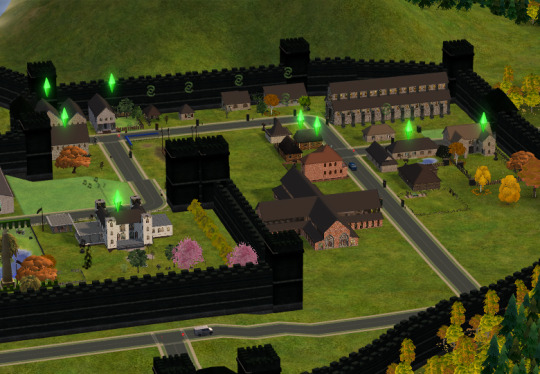
The third part is only partially a part of the city as it is divided from the rest of the city by inner city walls, but is has its own city walls as well: it is the seashore. The only living family in this part of the city are the fishermen (who when fish don't want to be caught resort to piracy). There's also a public beach with docks.

Now onto parts of kingdom that aren't parts of the city. There are woods outside the gate guarded by a noble family of knights. In the forest lives a family of werewolves and a family of bigfeet. Further towards the borders of realm there's a settlement of fairies and elves - they are uninterested in the affairs of humans and tolerate the short-lived specimen as long as they don't bother them too much. They are also suspicious of elves of other settlements.
In this part of map can be found a cemetery just outside the gate, a lake, fairy park and a forest.

Last but not least, rural area on the other side of the city. It is inhabited by a family of an elf of another settlement than the forest elves and a plantsim. In the furthest part of the are there's a single man who is trying to run away from responsibilities (and the consequences of his actions).
There are some empty settlements busy with farmers before the war. The only public lot in this part is a wooden temple.
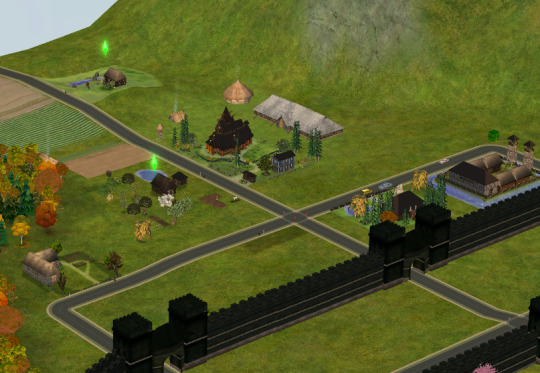
There's also university district and vacation destination - far east. I'll show them once I'm done with the main map.
I hope you'll find the journey through my neighbourhood interesting. 😊
part 2 | part 3 | part 4 | part 5 | part 6 | part 7 | part 8
32 notes
·
View notes
Text






Nothing left but that never stopped me.
Nothing to Save - David Herbert Lawrence // Eos - Gail Potocki // At Least I Have Nothing - Saint Motel // Morning in the Burned House - Margaret Atwood // "Untitled Coloured Fire Painting" & quote by Yves Klein // Be Bold Like Elijah - IRONTOM
#web weaving#webweaving#honeysound#david herbert lawrence#dh lawrence#gail potocki#saint motel#margaret atwood#yves klein#irontom#lyrics#poetry#art
22 notes
·
View notes
Text
My next post in support of Ukraine is:
Next site, Brody Castle in Brody, Lviv Oblast. It's a former fortress, and it was first mentioned in writings from the 1580s. In 1629, the town of Brody came under the control of Hetman Stanisław Koniecpolski, a Polish military commander, and he added more fortifications to the fortress. In 1648, the fortress was able to withstand a several weeks long siege by Cossack troops during the Khmelnytsky Uprising. In 1651, it was used as a Polish military base during the Battle of Berestechko, which was a battle between Zaporizhian Cossacks, with their Crimean Tatar allies, against the army of King John II Casimir of Poland. The fortress was used to hold captured Cossacks from the battle. The Potocki family, whom I've mentioned before, acquired the castle in 1704 and reconstructed the castle to be their residence. Since then, over the years, several of the fortress fortifications were demolished. After WWII, it housed a military unit. It was also damaged during other reconstructions. The only structure still fully standing is the residence built by the Potocki family.
#SlavaUkraïni 🇺🇦🌻




And, here's a link to a tweet about another castle in Lviv Oblast that I posted on Twitter on May 23, 2023. A castle in Pidhirsti, Ukraine.

16 notes
·
View notes
Photo

Two Rare Unknown Rembrandt Portraits Discovered in Private Collection
A pair of unknown and “exceptionally rare” portraits by Rembrandt have been discovered in a private collection in the UK.
The intimate paintings of relatives of the Dutch master are now expected to sell for between £5 million and £8 million ($6.25 million-$10 million) at auction.
Signed and dated 1635, the pictures are of an elderly husband and wife who were related to Rembrandt by marriage.
Measuring just under 8 inches high, the paintings depict wealthy plumber Jan Willemsz van der Pluym and his wife Jaapgen Carels, who were from a prominent family in the Dutch city of Leiden.
Their son Dominicus van der Pluym was married to Rembrandt’s cousin Cornelia van Suytbroec. The couple had one child, Karel van der Pluym, who is thought to have trained with Rembrandt and included the artist’s only surviving heir, Titus, in his will.
In 1635, the year the portraits were painted, the subjects acquired a garden next to that of Rembrandt’s mother in Leiden.
Experts at Christie’s auction house, which is handling the sale, say in a press release that the portraits have a “remarkable, virtually unbroken line of provenance.”
The artworks stayed within the sitters’ family until 1760, a year after the death of the couple’s great-grandson, Marten ten Hove. They then traveled to Warsaw, to the private collection of Count Vincent Potocki, before briefly entering the collection of Baron d’Ivry in Paris in 1820 and then James Murray, 1st Baron Glenlyon.
In June 1824, Murray put the artworks up for sale with Christie’s, where their listing described them as “Rembrandt – very spirited and finely colored.”
Since that sale, the paintings remained in Britain in the same family’s private collection and were unknown to experts. The current owners have not been named.
Henry Pettifer, international deputy chair of Old Master paintings at Christie’s, said in a telephone interview that the discovery was made a couple of years ago, as part of a “routine valuation to look at the contents of a house.”
“The pictures were immediately of terrific interest,” he said, adding that the owners were also taken by surprise.
“I don’t think they had looked into it,” he said. “They didn’t have expectations for the paintings.”
Pettifer said he had been “incredibly excited” to see the paintings, but “at that stage I didn’t jump to any conclusions.”
Details of the earlier sale at Christie’s in 1824 set the process rolling, followed by a long period of research at the Rijksmuseum in Amsterdam, where the portraits were investigated and underwent scientific analysis.
“What’s extraordinary is that the paintings were completely unknown. They had never appeared in any of the Rembrandt literature of the 19th or 20h century, so they were completely unknown,” said Pettifer.
The identities of the sitters were only confirmed by researchers at the Rijksmuseum.
The “small, very intimate, very spontaneous” nature of the paintings indicated a close relationship with the artist, Pettifer said.
“They are not grand, formal commissioned paintings,” he said. “I think they are the smallest portraits that he painted that we know of.”
The pictures are set to go on show in New York and Amsterdam next month, before returning to London for a pre-sale exhibition and the auction on July 6.
By Lianne Kolirin.
#Rembrandt#Two Rare Unknown Rembrandt Portraits Discovered in Private Collection#dutch artist#painter#painting#art#artist#art work#art world#art news#history#history news#lost and found
19 notes
·
View notes
Text
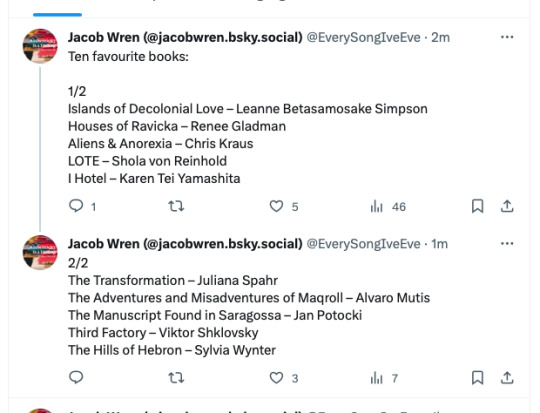
Ten Favourite Books:
Islands of Decolonial Love – Leanne Betasamosake Simpson
Houses of Ravicka – Renee Gladman
Aliens & Anorexia – Chris Kraus
LOTE – Shola von Reinhold
I Hotel – Karen Tei Yamashita
The Transformation – Juliana Spahr
The Adventures and Misadventures of Maqroll – Alvaro Mutis
The Manuscript Found in Saragossa – Jan Potocki
Third Factory – Viktor Shklovsky
The Hills of Hebron – Sylvia Wynter
4 notes
·
View notes
Text

Countess Katarzyna Potocka
2 notes
·
View notes
Photo
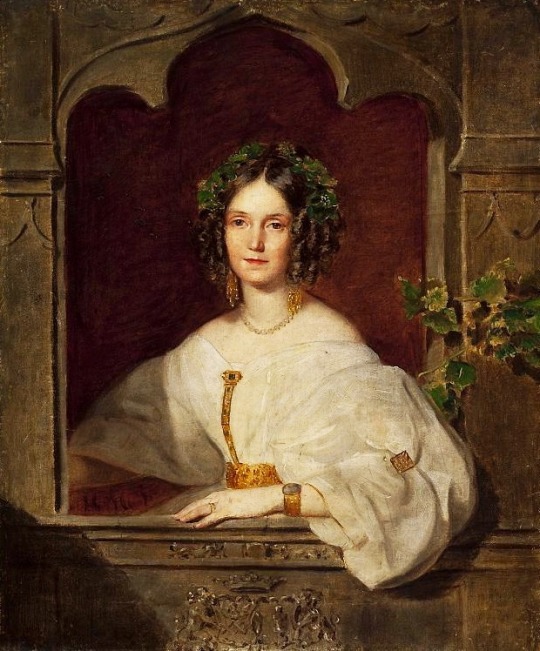
Olga Naryshkina (Potocki)
2 notes
·
View notes
Text
reading list - gothic
CLICK HERE TO ACCESS MY OTHER READING LISTS.
✵ ACTIVELY UPDATING ✵
☐ ALDERMAN, Naomi – The Lessons
☐ ATWOOD, Margaret – Lady Oracle
☐ AUSTEN, Jane – Northanger Abbey
☐ AZEVEDO, Álvares de – Noite na Taverna
☐ BECKFORD, William Thomas – Vathek
☐ BIERCE, Ambrose – The Death of Halpin Frayser
☐ BIERCE, Ambrose – The Spook House
☐ BLACKWELL, Anastasia – The House on Black Lake
☐ BLACKWOOD, Algernon – The Listener and Other Stories
☐ BRONTË, Charlotte – Jane Eyre
☐ BRONTË, Charlotte – Villette
☐ BRONTË, Emily – Wuthering Heights
☐ BROWN, Charles Brockden – Wieland
☐ BROWN, Charles Brockden – Ormond
☐ CAPOTE, Truman – Other Voices, Other Rooms
☐ CARTER, Angela – The Bloody Chamber
☐ CATHER, Willa – My Ántonia
☐ CAZOTTE, Jacques – Le Diable amoureux
☐ CHAMBERS, Robert W. – The King in Yellow
☐ DANFORTH, Emily M. – Plain Bad Heroines
☐ DANIELEWSKI, Mark Z. – House of Leaves
☐ DICKENS, Charles – Oliver Twist
☐ DICKENS, Charles – Bleak House
☐ DICKENS, Charles – Great Expectations
☐ DICKENS, Charles – The Mystery of Edwin Drood
☐ DOSTOYEVSKY, Fyodor Mikhailovich – The Double
☐ DOSTOYEVSKY, Fyodor Mikhailovich – The Landlady
☐ DOSTOYEVSKY, Fyodor Mikhailovich – Bobok
☐ DOSTOYEVSKY, Fyodor Mikhailovich – The Brothers Karamazov
☐ DOYLE, Sir Arthur Conan – Lot No. 249
☐ du MAURIER, Daphne – Jamaica Inn
☐ du MAURIER, Daphne – Rebecca
☐ du MAURIER, Daphne – My Cousin Rachel
☐ du MAURIER, George – Trilby
☐ FARING, Sara – The Tenth Girl
☐ FARRELL, Henry – What Ever Happened to Baby Jane?
☐ FAULKNER, William – The Sound and the Fury
☐ FAULKNER, William – As I Lay Dying
☐ FAULKNER, William – Light in August
☐ FAULKNER, William – Absalom, Absalom!
☐ FLAMMENBERG, Ludwig – The Necromancer
☐ GARSHIN, Vsevolod Mikhailovich – The Red Flower
☐ GAUTIER, Theophile – The Mummy's Foot
☐ GILMAN, Charlotte Perkins – The Yellow Wallpaper
☐ GOGOL, Nikolai Vasilievich – Evenings on a Farm Near Dikanka
☐ GOGOL, Nikolai Vasilievich – Mirgorod
☐ GOGOL, Nikolai Vasilievich – Arabesques
☐ GOGOL, Nikolai Vasilievich – The Nose
☐ GRACQ, Julien – Au château d'Argol
☐ HAWTHORNE, Nathaniel – Young Goodman Brown
☐ HAWTHORNE, Nathaniel – The Minister's Black Veil
☐ HAWTHORNE, Nathaniel – Edward Randolph's Portrait
☐ HAWTHORNE, Nathaniel – The House of the Seven Gables
☐ HAWTHORNE, Nathaniel – Rappacini's Daughter
☐ HILL, Susan – The Woman in Black
☐ HOFFMANN, E. T. A. – The Devil's Exilir
☐ HOFFMANN, E. T. A. – The Entail
☐ HOFFMANN, E. T. A. – Gambler's Luck
☐ HOGG, James – The Private Memoirs and Confessions of a Justified Sinner
☐ HOLT, Victoria – Mistress of Mellyn
☐ HOLT, Victoria – Kirkland Revels
☐ HUGO, Victor – Notre-Dame de Paris
☐ HUYSMANS, Joris-Karl – Là-bas
☐ INGOLDSBY, Thomas – The Ingoldsby Legends
☐ IRVING, Washington – The Adventure of the German Student
☐ IRVING, Washington – "The Legend of Sleepy Hollow"
☐ JACKSON, Shirley – The Lottery
☐ JACKSON, Shirley – A Visit
☐ JACKSON, Shirley – The Haunting of Hill House
☐ JACKSON, Shirley – We Have Always Lived in the Castle
☐ JACOBS, W. W. – The Monkey's Paw
☐ JAMES, Henry – The Turn of the Screw
☐ JELINEK, Elfriede – Die Kinder der Toten
☐ LATHOM, Francis – The Midnight Bell
☐ le FANU, SHERIDAN – Uncle Silas
☐ le FANU, SHERIDAN – In a Glass Darkly
☐ le FANU, SHERIDAN – Carmilla
☐ LEE, Harper – To Kill a Mockingbird
☐ LEIGH, Julia – The Hunger
☐ LEROUX, Gaston – Le Fantôme de l'Opéra
☐ LEVIN, Ira – The Stepford Wives
☐ LEWIS, Matthew Gregory – The Monk
☐ LEWIS, Matthew Gregory – The Castle Spectre
☐ MACHEN, Arthur – The Great God Pan
☐ MARRYAT, Florence – The Blood of the Vampire
☐ MARRYAT, Florence – The Phantom Ship
☐ MATURIN, Charles – Melmoth the Wanderer
☐ MEANEY, John – Bone Song
☐ MÉRIMÉE, PROSPER – La Vénus d'Ille
☐ MOORE, John – Zeluco
☐ MORRISON, Toni – Beloved
☐ NERVAL, Gérard de – Les Filles du feu
☐ OATES, Joyce Carol – Bellefleur
☐ OATES, Joyce Carol – Night-Side
☐ OATES, Joyce Carol – A Bloodsmoor Romance
☐ OATES, Joyce Carol – Mysteries of Winterthum
☐ OATES, Joyce Carol – My Heart Laid Bare
☐ O'CONNER, Flannery – Wise Blood
☐ ODOEVSKY, Vladimir – Russian Nights
☐ PARKER, Gilbert – The Lane that Had No Turning, and Other Tales
☐ PARSONS, Eliza – The Castle of Wolfenbach
☐ PARSONS, Eliza – The Mysterious Warning
☐ PEACOCK, Thomas Love – Nightmare Abbey
☐ PEAKE, Mervyn – Gormenghast
☐ PHILLIPS, Arthur – Angelica
☐ POE, Edgar Allan – "Berenice"
☐ POE, Edgar Allan – "Ligeia"
☐ POE, Edgar Allan – "The Fall of the House of Usher"
☐ POE, Edgar Allan – The Narrative of Arthur Gordon Pym of Nantucket
☐ POE, Edgar Allan – "The Masque of the Read Death"
☐ POE, Edgar Allan – "The Oval Portrait"
☐ POE, Edgar Allan – "The Pit and the Pendulum"
☐ POE, Edgar Allan – "The Black Cat"
☐ POE, Edgar Allan – "The Tell-Tale Heart"
☐ POTOCKI, Jan – The Manuscript Found in Saragossa
☐ PUSHKIN, Alexander – The Bridegroom
☐ PUSHKIN, Alexander – The Undertaker
☐ PUSHKIN, Alexander – The Queen of Spades
☐ RADCLIFFE, Ann – A Sicilian Romance
☐ RADCLIFFE, Ann – The Romance of the Forest
☐ RADCLIFFE, Ann – The Mysteries of Udolpho
☐ RADCLIFFE, Ann – The Italian
☐ RAY, Jean – Malpertuis
☐ ROCHE, Regina Maria – Clermont
☐ ROCHE, Regina Maria – The Children of the Abbey
☐ ROSTOPCHINA, Yevdokia Petrovna – Poedinok
☐ SETTERFIELD, Diane – The Thirteenth Tale
☐ SHELLEY, Mary – Frankenstein
☐ SHELLEY, Percy Bysshe – Zastrozzi
☐ SHELLEY, Percy Bysshe – St. Irvyne; or, The Rosicrucian
☐ SLEATH, Eleanor – The Orphan of the Rhine
☐ STEVENSON, Robert Louis – Strange Case of Dr Jekyll and Mr Hyde
☐ STEWART, Mary – Nine Coaches Waiting
☐ STOKER, Bram – Dracula
☐ STOKER, Bram – The Lair of the White Worm
☐ STORM, Theodor – Der Schimmelreiter
☐ TARTT, Donna – The Secret History
☐ TARTT, Donna – The Little Friend
☐ THOMAS, Elisabeth – Catherine House
☐ URBAN, Miloš – Sedmikostelí
☐ WALPOLE, Horace – The Castle of Otranto
☐ WILDE, Oscar – The Picture of Dorian Gray
☐ ZAFÓN, Carlos Ruiz – La sombra del viento
94 notes
·
View notes
Text
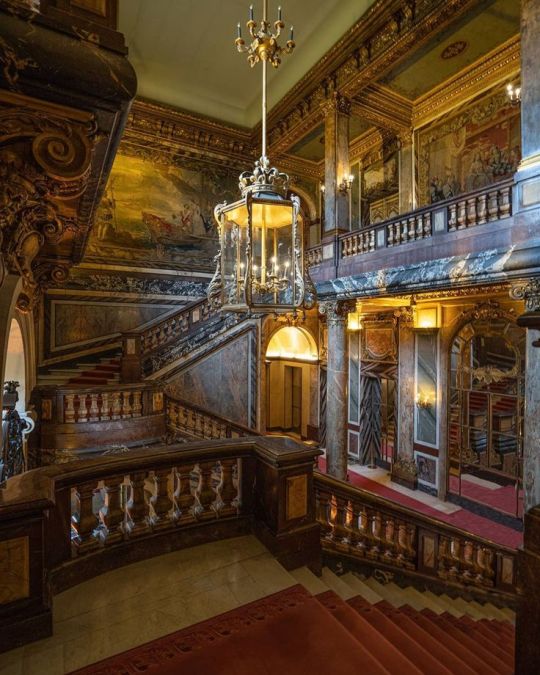
Hôtel Potocki, Paris, France,
Photography by Franks Fotografie
#art#design#architecture#history#luxury lifestyle#style#luxury house#luxury homes#hotel particulier#grand staircase#paris#france#hotel potocki#luxuryhouses
685 notes
·
View notes
Text
Why Józef Poniatowski never married
“A man with a reputation of a womanizer, with a couple of illegitimate children - and not married? Why so?” Knowing my interest in prince Poniatowski different people from time to time ask me these questions. So I decided to write this post to clarify the issue.
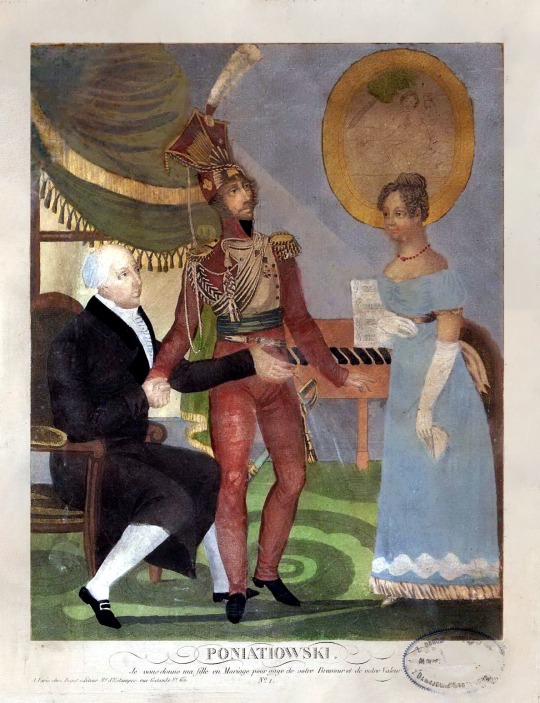
Prince Józef making a proposal, an engraving by F. Begat, 1821, from a French aquatint series illustrating Poniatowski’s life and death events - a completely imaginary, but the best illustration combining both the topics of “Poniatowski” and “marriage” I was able to find.
And to understand why Pepi remained a bachelor to the end of his days we need to have a look at his whole life, starting from the younger years.
Because when prince Poniatowski was in his twenties he did want to marry, to make his first love, the Austrian countess Karolina von Thun, his wedded wife.

Maria Carolina Anna von Thun, miniature brush by Anna Hochstädt (based on the original by Friedrich Heinrich Füger).
But, as I wrote in the post dedicated to prince Józef’s women, Pepi’s uncle, the Polish king, didn’t allow the nephew to associate himself with a girl of his choice. So, in the first case Poniatowski didn’t marry because he was prohibited to.
Furthermore, the king had his own ideas on which families it would have been convenient to become related with ordering prince Józef’s hands to their daughters. Among them there were a couple of cousins Czartoryskis (Maria and her younger sister, Zofia). Then Krystyna - the daughter of Ignacy Potocki. And one more girl - from Rzewuski family etc. (But all these projects remained on paper, and I am not even sure whether Józef knew about them.)
Anyway, the pressing of necessity to obey his uncle-king in matrimonial matters remained with prince Józef at least until Stanisław’s August abdication in 1795 (if not till 1798, when the latter died). And Pepi was finally “free” his first love wasn’t free anymore.

Élisabeth Vigée Le Brun, portrait of Lady Gillford, nee Marie Caroline von Thun, ci. 1792-95.
Yes, in 1793 the countess von Thun became the wife of a British diplomat, lord Gillford.
And approximately at the same time in Pepi’s life there appeared another lady, a Frenchwoman named Henriette de Vauban.

Felicja Pichor-Śliwicka as Henriette de Vauban and Józef Węgrzyn as Józef Poniatowski in Jan Adolf Hertz’s play “Prince Jozef Poniatowski”
First she accompanied prince Józef and his sister during their travel around Europe. And later, when in 1798 Poniatowski settled down in Warsaw, Madame de Vauban not only moved together with him into his famous palace “Pod Blachą” but quickly took on herself responsibilities of the “hostess”.

An unknown painter, a miniature portrait of Henriette de Vauban, ci. 1789
And the presence of Henriette in prince Józef’s life is thought by French (and even some Polish) historians to be a reason of Poniatowski’s indisposition to “tie the knot”.
Yes, being from 1798 to 1806 a Prussian subject and a private person Poniatowski theoretically could propose whoever he wanted. But Madame de Vauban was, from one hand, already married. And, from the other hand, she was giving prince Józef enough comfort not to seek consolation in a marriage with another woman.
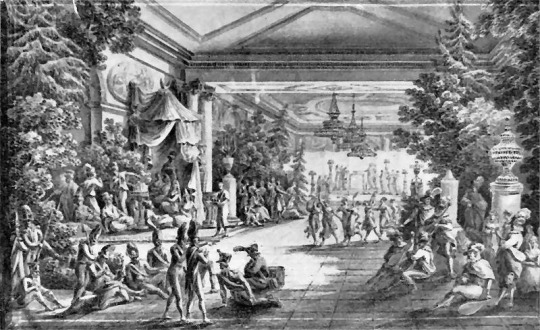
The feast arranged on occasion of prince Jozef’s birthday in the former royal library at the castle in Warsaw, Zygmunt Vogel, 1808
So it may be stated that prince Józef didn’t marry Madame de Vauban because she wasn’t eligible, and didn’t choose any other woman because he didn’t want to.
Ok, you may ask, and what about Zofia Czosnowska, the woman who gave birth to Poniatowski’s second son?
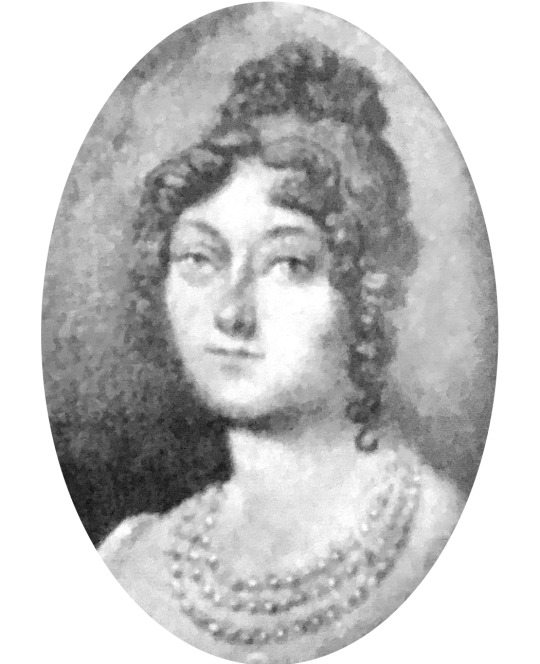
An unknown painter, a miniature portrait of Zofia Czosnowska
Considering this lady we first need to keep in mind that she herself was also married. (And though she separated from her first husband even before she became Pepi’s mistress, their formal divorce happened much after Poniatowski’s death, she during the time of his life Zofia Czosnowska wasn’t free either.)
An aside I couldn’t help but write: with all Pepi’s feelings towards beautiful Zofia, her appearance in his life didn’t change prince Józef’s lifestyle. As if nothing had happened Henriette de Vauban continued to live in Poniatowski’s house, prince Józef mentioned her in his will of 1812, and even shortly before his death he is recalled to say that “When it comes to dying ... to the afterlife I will take with me the unearthly smile of Henrietta ...”. All this IMHO eloquently says whom he really was attached to.
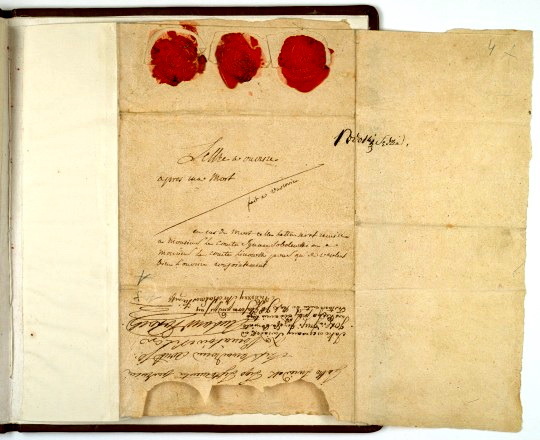
Poniatowski’s will
And there is one more thing we should take into account when looking at prince Józef’s later years. Namely - the creation in 1807 the Duchy of Warsaw.

Napoleon issuing the Constitution of the Duchy of Warsaw by Marcello Bacciarelli (1811)
Because this event, definitely positive for prince Józef’s motherland, simultaneously turned him from a private person to a public one, with all the consequences. And though Napoleonic code, from one hand, allowed divorces, the emperor, on the other hand, preferred to arrange marriages to his people by himself. Which means that had prince Józef acquired a desire to marry a woman he liked he first should have persuaded Napoleon to approve such a choice. And this again put Poniatowski in a kinda gloomy state like it had been years ago when he was dependent on the wishes of his monarch. And this fact may in my opinion served an explanation if to ask why Pepi didn’t divorce one of his mistresses from her husband and marry her...
And the last but not the least. Yes, by many people prince Józef is thought to have be a womanizer, but the more I learn about him the am I becoming convinced, that this might been a kind of “exaggeration”.
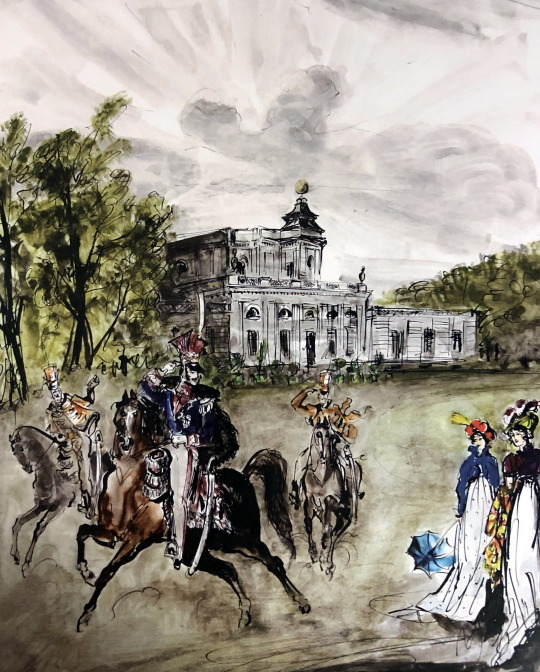
Antoni Uniechowski, prince Józef Poniatowski in Jabłonna, 1975
Because many a diarists recall that “he liked women, and women liked him”, but precise names are rarely mentioned, and if to count the ones of Poniatowski’s proven “love interests” the number is in fact not very high (especially to compare with such known “ladies' man” from the epoch like Napoleon, Talleyrand, Murat etc..)
#Poniatowski#józef poniatowski#józef poniatowski’s women#henriette de vauban#zofia czosnowska#karolina von thun
14 notes
·
View notes
Text
Trouble by Matt Dickman
Marilyn Monroe took all her sleeping pills
to bed when she was thirty-six, and Marlon Brando’s daughter
hung in the Tahitian bedroom
of her mother’s house,
while Stanley Adams shot himself in the head. Sometimes
you can look at the clouds or the trees
and they look nothing like clouds or trees or the sky or the ground.
The performance artist Kathy Change
set herself on fire while Bing Crosby’s sons shot themselves
out of the music industry forever.
I sometimes wonder about the inner lives of polar bears. The French
philosopher Gilles Deleuze jumped
from an apartment window into the world
and then out of it. Peg Entwistle, an actress with no lead
roles, leaped off the “H” in the hollywood sign
when everything looked black and white
and David O. Selznick was king, circa 1932. Ernest Hemingway
put a shotgun to his head in Ketchum, Idaho
while his granddaughter, a model and actress, climbed the family tree
and overdosed on phenobarbital. My brother opened
thirteen fentanyl patches and stuck them on his body
until it wasn’t his body anymore. I like
the way geese sound above the river. I like
the little soaps you find in hotel bathrooms because they’re beautiful.
Sarah Kane hanged herself, Harold Pinter
brought her roses when she was still alive,
and Louis Lingg, the German anarchist, lit a cap of dynamite
in his own mouth
though it took six hours for him
to die, 1887. Ludwig II of Bavaria drowned
and so did Hart Crane, John Berryman, and Virginia Woolf. If you are
travelling, you should always bring a book to read, especially
on a train. Andrew Martinez, the nude activist, died
in prison, naked, a bag
around his head, while in 1815 the Polish aristocrat and writer
Jan Potocki shot himself with a silver bullet.
Sara Teasdale swallowed a bottle of blues
after drawing a hot bath,
in which dozens of Roman senators opened their veins beneath the water.
Larry Walters became famous
for flying in a Sears patio chair and forty-five helium-filled
weather balloons. He reached an altitude of 16,000 feet
and then he landed. He was a man who flew.
He shot himself in the heart. In the morning I get out of bed, I brush
my teeth, I wash my face, I get dressed in the clothes I like best.
I want to be good to myself.
22 notes
·
View notes
Photo

Almost seventy-nine years ago today on May 9, 1939, the Polish ambassador, Count Jerzy Potocki (left, above), visited the White House along with Polish government ministers Antoni Roman and Aleksander Bobkowski. They came in full diplomatic regalia--top hats, cutaways, and striped trousers. Only I must admit to being shocked (yes, shocked!) due to the fact that the ambassador himself eschewed striped trousers in a glaring breach of protocol.

Only a couple of months earlier, on March 28, 1939, the Spanish ambassador had visited the White House to confer with President Roosevelt. Fernando de los Rios represented the Republican government of Spain, recently defeated by Franco. The ambassador sports the appropriate cutaway and striped trousers, thank goodness, though he clutches what looks like a silk-banded bowler. The rules were so complex, and times were tough in 1939 to be sure.

To be fair to these gentlemen, who both wound up living in exile, other more ominous topics were the focus of attention. When the British Ambassador Lord Lothian and French Ambassador Rene Doynel Saint-Quentin visited President Roosevelt in 1939 and spoke with reporters afterwards, they didn't bother with diplomatic extravagances. The days of fancy clothes were coming to an end as fascist armies swept across Europe.
(Three photos courtesy of the Library of Congress, Harris and Ewing Collection)
#statedepartment#diplomats#diplomacy#world war II#spain#poland#united kingdom#france#fashion#fdr#roosevelt#fdrlibrary#harris and ewing#franklin d. roosevelt#state department
15 notes
·
View notes
Photo










Sunset over Seeheim-Jugenheim (No. 1)
Descriptions of English gardens were first brought to France by the Abbé Le Blanc, who published accounts of his voyage in 1745 and 1751. A treatise on the English garden, Observations on Modern Gardening, written by Thomas Whately and published in London in 1770, was translated into French in 1771. After the end of the Seven Years' War in 1763, French noblemen were able to voyage to England and see the gardens for themselves, and the style began to be adapted in French gardens. The new style also had the advantage of requiring fewer gardeners, and was easier to maintain, than the French garden.
One of the first English gardens on the continent was at Ermenonville, in France, built by marquis René Louis de Girardin from 1763 to 1776 and based on the ideals of Jean Jacques Rousseau, who was buried within the park. Rousseau and the garden's founder had visited Stowe a few years earlier. Other early examples were the Désert de Retz, Yvelines (1774–1782); the Gardens of the Château de Bagatelle in the Bois de Boulogne, west of Paris (1777–1784); The Folie Saint James, in Neuilly-sur-Seine, (1777–1780); and the Château de Méréville, in the Essonne department, (1784–1786). Even at Versailles, the home of the most classical of all French gardens, a small English landscape park with a Roman temple was built and a mock village, the Hameau de la Reine (1783–1789), was created for Marie Antoinette.
The new style also spread to Germany. The central English Grounds of Wörlitz, in the Principality of Anhalt, was laid out between 1769 and 1773 by Prince Leopold III, based on the models of Claremont, Stourhead and Stowe Landscape Garden. Another notable example was The Englischer Garten in Munich, Germany, created in 1789 by Sir Benjamin Thompson (1753–1814).
In the Netherlands the landscape-architect Lucas Pieters Roodbaard (1782–1851) designed several gardens and parks in this style. The style was introduced to Sweden by Fredrik Magnus Piper.
In Poland the main example of this style is Łazienki Park in Warsaw. The garden scheme owes its shape and appearance mainly to the last king of the country Stanisław August Poniatowski (Stanisław II Augustus). In another part of the Polish-Lithuanian Commonwealth the Sofiyivka Park (Zofiówka), now Ukraine, was designed by Count Potocki so as to illustrate the Odyssey and the Iliad.
The style also spread rapidly to Russia, where in 1774 Catherine the Great adapted the new style in the park of her palace at Tsarskoe Selo, complete with a mock Chinese village and a Palladian bridge, modeled after that at Wilton House. A much larger park was created for her son Paul in the neighbouring estate of Pavlovsk. The Monrepos Park is sited on the rocky island of Linnasaari in the Vyborg Bay and is noted for its glacially deposited boulders and granite rocks.
Source: Wikipedia
#Seeheim-Jugenheim#Hesse#Hessen#Goldschmidts-Park#nature#sunset#Germany#Deutschland#summer 2020#original photography#travel#vacation#view#cityscape#tourist attraction#English landscape garden#trail#Europe#tree#lawn#grass#silhouette#sky#sun#rose garden#banister#evening#shrub#flower#flora
2 notes
·
View notes
Photo

The Dark Thread: From Tragical Histories to Gothic Tales (Early Modern Exchange), edited by John D. Lyons, University of Delaware Press, 2019. Info: upress.virginia.edu.
In The Dark Thread, scholars examine a set of important and perennial narrative motifs centered on violence within the family as they have appeared in French, English, Spanish, and American literatures. Over fourteen essays, contributors highlight the connections between works from early modernity and subsequent texts from the eighteenth through the twentieth centuries, in which incidents such as murder, cannibalism, poisoning, the burial of the living, the failed burial of the dead, and subsequent apparitions of ghosts that haunt the household unite “high” and “low” cultural traditions. This book questions the traditional separation between the highly honored genre of tragedy and the less respected and generally less well-known genres of histoires tragiques, gothic tales and novels, and horror stories.
Contents:
Introduction – John D. Lyons
The Death of Tragedy and the Birth of the Gothic – John D. Lyons
Metamorphoses of the Histoires Tragiques – Hervé-Thomas Campangne
The Real of the Tragic Tale in Sixteenth-Century France – David Laguadia
Doubtful Readings in Rosset, Nodier, and Potocki – Timothy Chester and John D. Lyons
The Beauty of Violence in Rosset and Barberey d’Aurevilly – Kathleen Long
Solution and Dissolution: Zayas’s Darkening Threads – Marina S. Brownlee
Evil Mothers. From Devouring Witches to Deadly Ghosts – María Tausiet
On Specters and Skulls. Rosamond and Alboin in Seventeenth-Century Tragedy – Michael Meere
“Autre fait arrivéau château de Nicklspurg, en Moravie”. Dideror and the Horrid Case Study – Caroline Warman
At the Dark Edge of Enlightenment. Early Modern Vampires – Guy Spielmann
Darkness at Noon. Sade’s Way to Terror – Philippe Roger
Anachronism, Heterotopia, and Gender in Anglophone Gothic – Alison Booth
Inassimilable. Gothic Francophobia in “The ‘Haunted House’ in Royal Street” – Jennifer Tsien
Houses That Live and Die. From Greek Tragedy to the Gothic – Jocelyn Moore
10 notes
·
View notes
Note
What is Evelyn's favourite book and why? 📚📚
Oh, dear. That´s a great question, but super hard to answer. I think anybody who loves books will find it hard to narrow it down to a single favorite (that´s certainly my case!), so it shouldn´t be all that different for fictional bookworms like Evelyn. So I´ll just tell you what I imagine she likes to read, given her background and all. (btw, these books are not necessarily books I personaly love, even though they´re all good and all, so this shouldn´t really be considered a book rec lol)
Evelyn grew up in the 60s and 70s, and her father was a History teacher with a keen interest on medieval history, so it´s an easy guess that she read a lot of Tolkien in her formative years. She also read a lots of fairy tales, so add Grimm and Andersen, as well as Jane ‘Speranza’ Wilde´s compilations (Oscar Wilde´s mother, who was a folklorist, poet and supporter of Irish nationalism.)
Growing up Evelyn continued to enjoy books that took fairy tales and spun their darker, more complex motifs into adult literature, like “The Bloody Chamber” and “Nights at the Circus” by Angela Carter. Actually her taste in literature can go quite dark and quirky: magic realism like Isabel Allende´s “House of the Spirits”, good old classic gothic stuff like Ann Radcliffe´s “A Sicillian Romance”, more intimate, character driven literature like Charlotte Brontë´s “Jeyne Eyre” and finally some things that defy classication like Jan Potocki’s “The Manuscript Found in Saragossa” . She does own MANY compilations of fantastic/supernatural/scary short stories of various authors. Of course, as a historian, she has to bea fan of historical novels like Umberto Eco´s “The Name of the Rose”, Hillary Mantels´"Wolf Hall", Saramago´s “The Siege of Lisbon” and Elizabeth Bowen´s “The Last September”.
As far as poetry goes, Lord Byron and Federico Garcia Lorca.
I think that if pressed to narrow her choices down to one (on a “which book would you take to a desert island” kind of deal)…I think it would boil down to “The Manuscript Found in Saragossa” simply because it has a little of everything she likes in a single book.
7 notes
·
View notes